Travel Photography Tips: Taking Photos of People
Article and photos by Volker Poelzl
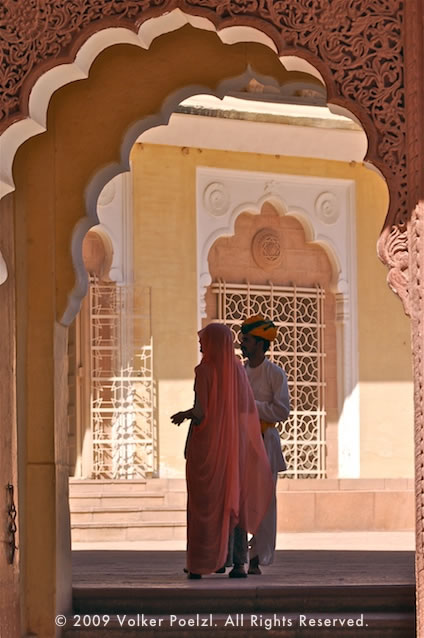 |
When I started taking travel photographs, I mainly took pictures of landscapes, dramatic natural features, architecture, and historic cities. But I soon realized that travel photography is about more than just great scenery and picturesque towns. Great travel photographs not only highlight beautiful landscapes and historic buildings, but also portray the local people. In this fourth installment of our “Travel Photography Tips” I would like to write about taking pictures of people in everyday life situations. This requires a different approach to photography than taking pictures of festivals, which I covered in my last photography article, Photographing Festivals and Cultural Events. Photographing people engaged in their day-to-day activities may seem like a straightforward task, but taking great pictures of ordinary situations is not as easy as it sounds. In contrast to festivals or celebrations, you don’t have colorful decorations and people dressed up in costumes for great pictures. You need to take the initiative and look for interesting people and scenes to photograph. With a little bit of imagination and good observation skills you can turn everyday events and ordinary scenes from daily life into great photographs.
Let Your Photographs Tell a Story
Great photographs tell a story about the place and the people they show without the need for captions or lengthy explanations. Great photographs have intent behind them—an underlying script or story. They are never just snapshots of random people or scenes. In order to take great pictures of people a photographer needs to be able to look behind the scene. How can you take great pictures of a Mayan solstice ceremony if you know nothing about Mayan Cosmology? How can you portray farmers in rural India if you know nothing about their struggles and hardships? A great photograph is only the tip of the iceberg—the final result of a photographer’s quest to understand and empathize with the people he photographs.
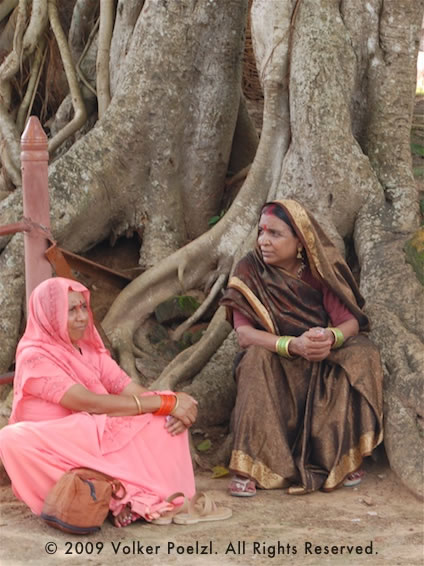 |
There are several visual elements that make up a successful photograph of people. The person you are photographing is no doubt the most important element, but you do not need to show people close-up to get a great shot. If you are able to create an interesting composition, the people in the picture can be reasonably far away, and they do not necessarily have to be engaged in an interesting activity either. I also look for an interesting background and a composition that enhances the scene. Before pressing the shutter try several different viewpoints and angles, and experiment with both horizontal and vertical views. In India I took a picture of a man sleeping on a bench at a famous historic monument. There is nothing happening in the picture, but the interesting perspective and composition, and the beautiful color variations of the carved columns resulted in a great photograph.
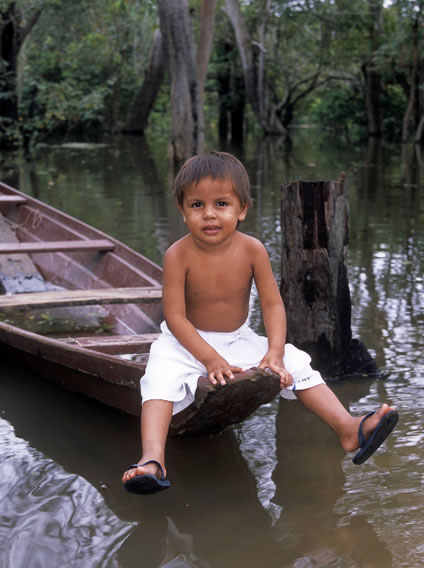 |
Taking pictures of people is easy: you frame your subject matter and press the shutter. But if you want to take great photographs, you need to experiment and explore different ways of taking pictures. Say you like the colorful costume of a market vendor in Guatemala, and you are taking out your camera to take a picture. If you just want a visual memory of the scene, a simple snapshot will do, but if you want to create a great photograph you need to do a little more work. You will not only pay attention to the colorful costume but also the woman’s facial expressions and her surroundings. You will watch her gestures as she sells her goods to watch for the perfect moment to take a photograph. A picture of a market vendor alone at her stall only tells half the story, and so you would want to include customers as well. You also want to pay attention to the effect of light and shadow. Does the market stall’s canopy partly obscure the woman’s face or create a distracting patchwork of light and shadow in the background? Try to find a perspective or viewpoint that excludes such distracting elements. A skillful photographer recognizes the importance of visual elements and will pay as much attention to detail as to the main subject of interest.
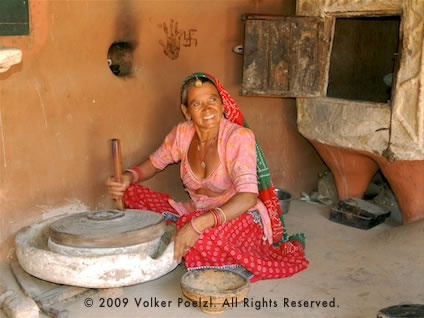 |
But there is no need to be frustrated if your pictures do not turn out as planned. There is a lot you can do later on at home using sophisticated image editing tools. When taking pictures of people I have found that cropping is one of the most important and also easiest adjustments to enhance photographs. Cropping allows you to focus on the essential components of your photos and leave out distracting elements. It also allows you to adjust the composition and place your main subject exactly where you want it to be.
Photography Etiquette
Taking snapshots of every local in a colorful costume may be the best way for a hurried tourist to take pictures, but it leaves a bad impression. In many countries taking pictures of people without asking them first is offensive, and travelers should be respectful of local customs. A few years ago in Bolivia, I took pictures of a hillside, and several women working in the fields in the distance were waving their hands, motioning me not to take pictures of them. I was not even pointing my camera at them, but I realized that the indigenous people did not want to be photographed, at least not without some form of remuneration. All across Central and South America indigenous people have long since discovered how attractive their colorful costumes are to photographers, so it has become customary to charge photographers for taking pictures of them. It is quite obvious that thousands of photographing travelers have come before us, and that the locals have learned to take advantage of our obsession with taking pictures.
Although I do not mind asking to take a picture or paying a small fee, I generally prefer taking candid shots. Most people assume an unnatural pose when they know they are being photographed, so the photographs usually do not turn out very good. I have tried several different approaches to taking candid shots, but taking pictures of people without them knowing about it is not easy. At a rural market in Guatemala I sat down on a stool in the corner of the market square, concealed behind vendors and stalls. This allowed me to use my large SLR and telephoto lens without being detected. I have also taken photos of street and market scenes by holding my compact digital camera in my hand and pointing it in the direction of the people I wanted to photograph. Although there were always some pictures that were blurry or didn’t capture the scene I wanted, I always got a few great shots as well. Unaware that I held my small camera in the palm of my hand and that I was taking pictures, people went about their activities without taking note of me.
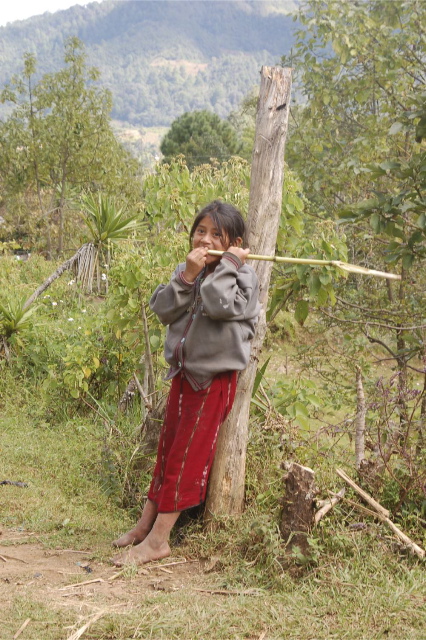 |
Camera Equipment
On my travels I have taken pictures of people with a lot of different cameras and lenses, and I have discovered the advantages and disadvantages of each of them. I liked the fast and convenient 50mm fixed focus lens that came with my first SLR. This was a good versatile lens, but I could not take pictures of people from a distance greater than about 20 feet. This changed when I bought a telephoto lens, which allowed me to zoom in on people from farther away. But telephoto lenses need more light, and you need to increase the aperture and/or lower the shutter speed. This can easily result in blurry pictures, unless of course, you buy an expensive zoom lens with built-in image stabilization. This new technology compensates for camera shake, and allows you to use your telephoto lens in poor lighting conditions. But even with today’s advanced zoom lenses, pictures of people tend to be better when taken from a shorter distance. Telephoto lenses flatten your images resulting in less perception of depth, and they also have a very short depth of field, which means that any area in your picture outside your main focus points will be blurry. The best approach is to experiment with a variety of lenses and camera settings before you go on a trip, so you can find out what works best for you.
Volker Poelzl is a Living Abroad Contributing Editor for TransitionsAbroad.com. On his extensive travels in over thirty countries worldwide, his camera has always been an important travel companion.
|
